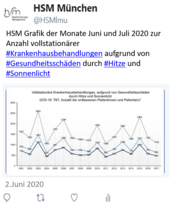Is the Needs-Based Planning Mechanism Effectively Needs-Based? An Analysis of the Regional Distribution of Outpatient Care Providers
| Authors/Editors: |
Ozegowski, S Sundmacher, L. |
|---|---|
| Publication Date: | 2012 |
| Type of Publication: | Articles in Refereed Journals (National) |
| ISBN/ISSN: | 0941-3790 |
| erschienen in: | Das Gesundheitswesen |
| Weitere Quellenangabe: | Volume 74(10), Pages 618-26 |
Abstract
Aims
Since the 1990s licenses for opening a medical practice in Germany are granted based on a needs-based planning system which regulates the regional allocation of physicians in primary care. This study aims at an analysis of the distribution of physicians (and hence the effects of the planning system) with regard to the overarching objective of primary care supply: the safeguarding of „needs-based and evenly distributed health care provision“ (Section 70 para 1 German Social Code V).
Methods
The need for health care provision of each German district (or region) and the actual number of physicians in the respective area are compared using a concentration analysis. For this purpose, the local health-care need was approximated in a model based on the morbidity predictors age and sex and by combining data on the local population structure with the age- and sex-specific frequency of physician consultations (according to data of the GEK sickness fund). The concentration index then measures the degree of regional inequity in the distribution of outpatient care.
Results
The results of the analysis demonstrate an inequitable regional distribution between medical needs of the local population and the existing outpatient health care provider capacities. These regional disparities in needs-adjusted supply densities are particularly large for outpatient secondary care physicians and psychotherapists, even when taking into account the care provision of urban physicians for peri-urban areas as well as the adequacy of longer travel times to specialists. One major reason for these inequities is the design of today’s physician planning mechanism which mainly conserves a suboptimal status quo of the past.
Conclusion
The initiated reforms of the planning mechanism should progress and be further deepened. Especially today’s quota-based allocation of practice licenses requires fundamental changes taking into account the relevant factors approximating local health care needs, re-assessing the adequate spatial planning level and expanding opportunities for introducing innovative and more flexible health care services models.





